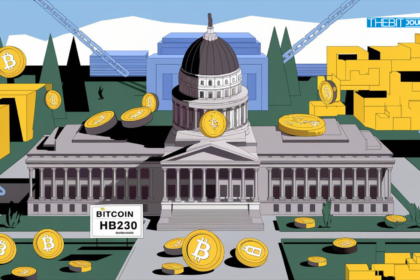One of the main ‘blockchains that support the entire cryptocurrency ecosystem of Ripple is the XRP Ledger, which went down for an hour on February 4, 2025. According to developers, no user assets or data were touched during the outage. The outage brought the ledger creation process to a halt, raising questions about network stability, while its quick recovery showed the strength of the XRPL infrastructure.

What Happened? A Look Under the Hood
Based on reports, the network started to go down when the XRP Ledger stopped making new blocks at ledger index 93,927,173. Although some consensus processes were still running, the core functionality that validates and adds new ledgers was paused. This affected the network’s ability to process and record transactions.
In a public statement, David Schwartz, Ripple’s Chief Technology Officer, confirmed the outage, saying although the ledger halted temporarily, the consensus mechanisms continued to run. Schwartz explained that validators and developers worked together to get things back to normal, starting from the last confirmed ledger.
Root Cause Under Investigation
Although the XRPL network is back up, sources say the root cause is still unknown. The post-mortem analysis by the RippleX team has begun to identify the technical failure that caused this.
On X, RippleX Devs said:
“The XRP Ledger has resumed forward progress. Our team is investigating the root cause and will update as soon as possible.”
Schwartz noted that the network may have self-healed.
“Very few UNL (Unique Node List) operators actually made any changes, as far as I can tell, so it’s possible the network spontaneously recovered. I’m not sure yet”

This is interesting because it raises questions about how resilient the decentralized network is and how naturally it can self-correct errors without human intervention.
Built-In Safeguards Protected Data
Despite the network going down, XRPL worked as intended and prevented any sets of data from being accepted by an inconsistent ledger. These safety features ensured all user transactions were safe and no funds were lost.
Schwartz then went into more detail about the safety features:
“The network’s built-in protections detected the halt and prevented potentially inconsistent ledgers from being trusted, keeping assets safe throughout the incident.”
This shows the XRPL consensus mechanism is really aggressive at keeping everything intact even when technical defaults happen.
A History of Network Stability with Isolated Incidents
Not the first time an apparent technical glitch has brought XRPL online. According to available data, a bug knocked many nodes offline in late November 2024 and caused a temporary stall that halted transaction processing for 10 minutes.

These types of incidents may be rare but allow developers to improve the network for better resilience. In each of these cases, the quick response from the XRPL community minimized downtime and ensured no permanent damage to user assets.
Conclusion: Lessons and Potential Improvements
The RippleX team is still investigating the cause of the halt and will implement fixes to prevent this from happening again in the future. These post-mortem analyses are critical for blockchain networks, especially ones like XRPL, which process millions of transactions from global financial institutions.
In a broader context, these types of situations highlight the need for continuous development and stress testing in blockchain systems, including those that are highly decentralized. They also prove the point of decentralization asthe XRPL distributed validator network had a key role in the system recovery.
The BIT Journal is available around the clock, providing you with updated information about the state of the crypto world. Follow us on Twitter and LinkedIn, and join our Telegram channel.
FAQs
1. What caused the XRP Ledger to halt?
The root cause of the network halt on February 4, 2025, is still being investigated. A post-mortem is being worked on by developers to identify the technical issue that caused the outage.
2. Were any user funds lost during the network halt?
No, there was no loss of user funds or data. All transactions were safe by the inbuilt safeties of the XRP Ledger.
3. How long was the XRP Ledger stalemated?
An hour-long stall was recorded on the XRP Ledger, during which new ledgers ceased to be generated.
4. Was it the first time the XRP Ledger had this kind of problem?
No, it’s not. In late November 2024, the network was stalled when a bug knocked many nodes offline. The glitch caused 10 minutes of transaction processing downtime.
5. What is XRP Ledger?
XRP Ledger is a decentralized blockchain for fast and low-cost cross-border payments. This is widely used in the financial sector as many find it efficient and scalable.
Glossary
The XRP Ledger (XRPL): a decentralized blockchain that offers fast and inexpensive transaction processing.
Ledger Index: Refers to an ID number that is assigned to every block (or ledger) ever created on the blockchain.
Consensus Mechanism: The procedure through which a blockchain network agrees on what the current state of a ledger is.
UNL or Unique Node List: An updated list of all trusted validators to the XRPL.
Post-Mortem Analysis: A detailed inquiry after an incident to find the root cause to prevent it from happening again.




























